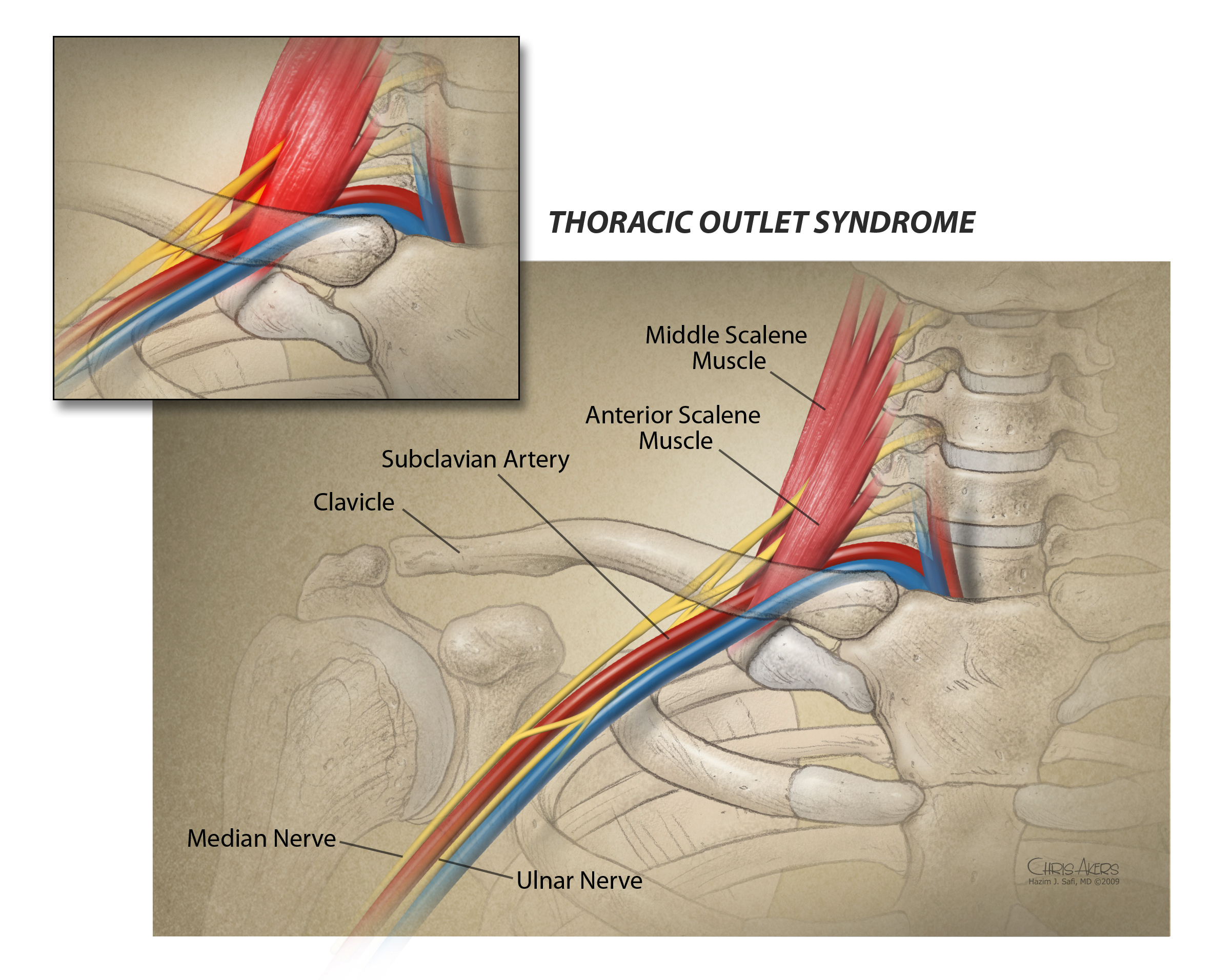Thoracic Outlet Syndrome
Thoracic outlet syndrome (TOS) is an uncommon disorder that results in the compression of the brachial plexus (nerves), subclavian vein, or subclavian artery as the structures pass through the thoracic outlet as they travel to the arm. There are three types of thoracic outlet syndrome depending on which structure is compressed.

- Neurogenic TOS is compression of a group of nerves called the brachial plexus and can cause nerve damage, pain, and tingling in the arm and shoulder.
- Venous TOS is compression the subclavian vein and can lead to swelling and venous clot formation.
- Arterial TOS is compression of the subclavian artery which causes decreased blood flow to the arm.
Neurogenic Thoracic Outlet Syndrome
Neurogenic Thoracic Outlet Syndrome (NTOS) is by far the most common type of thoracic outlet syndrome. It results from compression of the nerves of the brachial plexus as they pass through the thoracic outlet, whose borders are a triangle formed by the anterior scalene muscle, the middle scalene muscle, and the first rib. Injury to the scalene muscles induces spasm and subsequent elevation of the first rib, which decreases the space through which the nerves pass and may lead to chronic compression of the nerves by the muscles or by the rib.
Venous Thoracic Outlet Syndrome
The subclavian vein passes through the anterior thoracic outlet in a space bordered by the anterior scalene muscle laterally, by the clavicle superiorly, by the first rib inferiorly, and by the costoclavicular ligament medially. When the costoclavicular ligament inserts more laterally than usual and the anterior scalene muscle is hypertrophied, the subclavian vein may be compressed, resulting in Venous Thoracic Outlet Syndrome (VTOS).
Arterial Thoracic Outlet Syndrome
Arterial Thoracic Outlet Syndrome (ATOS) is the least common form of TOS. It is usually associated with cervical ribs or anomalous first ribs, which raise the floor of the thoracic outlet and compress the subclavian artery. Repeated pulsation of the artery against the ribs injures the artery, leading to narrowing of the artery or aneurysmal enlargement of the artery. Thrombus may then form just beyond the narrowed artery or along the wall of the aneurysm that may break free and travel to the hand or forearm.
Learn more about TOS on SVS.org

